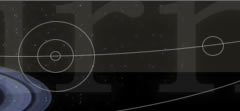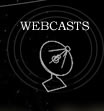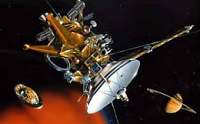|
|
|
|
|
|
|
|
|
|
|
|
|
|
|
|
|
|
||||||||||||
|
|
|

|
|
|||||||||||||||||||||||||

|

|
|
||||||||||||||||||||||||||

|

|

|
|
|||||||||||||||||||||||||

|

|

|
|

|
|
|||||||||||||||||||||||
|
|
|
|||||||||||||||||||||||||||
|
|
|
|
||||||||||||||||||||||||||
|
|
|
|||||||||||||||||||||||||||

|
|
|||||||||||||||||||||||||||
|
|
|||||||||||||||||||||||||||
|
|
THE CASSINI-HUYGENS SPACECRAFT
Launched
in 1997 from Cape Canaveral in Florida, the C
assini s
pacecraft,
with the
Huygens
probe on board, began a journey to Saturn
that would cover over 2 billion miles (3.5 billion kilometers).
The objectives of the Cassini-Huygens mission are to analyze the
composition and atmosphere of Saturn, investigate Saturn's rings
and several of its moons, and study the planet's magnetosphere
- the region of space that's influenced by Saturn’s magnetic
field.
On
June 11, 2004,
Cassini
came within about 1,200 miles
(2,000 kilometers) of Phoebe, the largest of Saturn's outermost
moons. An analysis of the data gathered during the flyby has led scientists to conclude that Phoebe is a relic from more than four billion years ago. This little moon seems to have been one of the abundant icy planetesimals (small bodies) that helped form the giant outer planets.
In December 2004, Huygens separated from Cassini and begin coasting toward Titan, Saturn's largest moon and the only moon in the solar system that has an atmosphere. Huygens entered Titan's atmosphere in January 2005 and gathered a variety of atmospheric data before landing on the moon's surface. [See Updates to find out what sceintists learned from the remarkable Huygens mission.]
The
orbiter is named for Jean-Dominique (or Giovanni Domenico) Cassini
(1625-1712), a French-Italian astronomer who discovered four of
Saturn's moons and a gap in the ring system known as the Cassini
division. The probe honors Dutch scientist Christiaan Huygens
(1629-1695), who correctly theorized that Saturn was surrounded
by rings and also discovered Titan.
|
|
|
|
||

|
||
